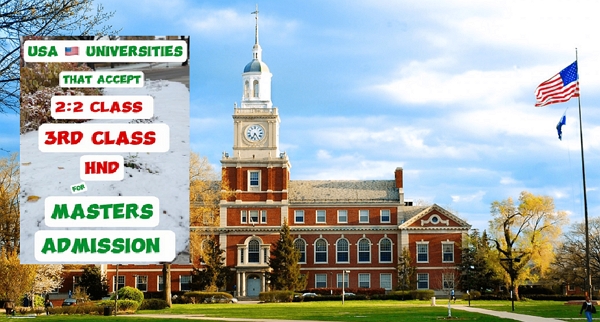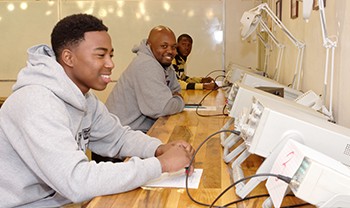The journey to study in the United States is one that opens up countless opportunities for students from all around the world. As 2026 approaches, many prospective international students are preparing to apply to U.S. colleges and universities, but the process can feel overwhelming. From researching the right colleges to navigating the complexities of visa applications, it’s easy to get lost in the details. However, applying directly to U.S. colleges, securing scholarships, and obtaining an F1 student visa without relying on agents is not only possible but also highly manageable with the right guidance.
In this comprehensive guide, we’ll walk you through the entire USA college admission process for 2026, explaining how to apply to U.S. colleges, how to search for and apply for scholarships, and how to navigate the F1 visa application process without the help of an agent. We’ll also provide actionable tips on how to save money, avoid common pitfalls, and successfully transition from your home country to studying in the U.S. on your own terms. This guide will give you all the necessary tools and resources to approach your U.S. college admission journey with confidence.
With the growing number of online resources, accessible information, and university websites, it’s easier than ever to complete your college applications and visa procedures independently. This guide emphasizes efficiency, clarity, and strategy, providing you with a step-by-step approach. Whether you’re just beginning your college search or are preparing to submit your applications, the following advice will help you navigate the path to studying in the United States successfully without the need for third-party agents.
Step 1: Researching and Choosing the Right U.S. Colleges
Before diving into applications, it’s crucial to research and identify the U.S. colleges and universities that align with your academic goals, budget, and personal preferences. Here are the steps to help you choose the best schools:
Know Your Preferences and Goals
Start by identifying what you want from your college experience. Consider factors like:
- Academic Programs: What majors or programs align with your career goals?
- Location: Would you prefer to study in an urban or rural setting? What about climate?
- Cost: Can you afford the tuition, or would you need financial aid?
- Size: Do you prefer large universities with a diverse student body or smaller, more intimate colleges?
Use Online Resources
Once you have a clear understanding of your preferences, use reputable websites to research colleges. Websites like College Board, U.S. News & World Report, and CommonApp offer in-depth reviews, rankings, and key information about universities. Also, explore university websites directly to gather data on specific programs, admission requirements, and tuition fees.
Create a College List
Make a list of colleges that match your criteria. It’s advisable to have a mix of “reach schools” (colleges where admission might be competitive) and “safety schools” (colleges where your chances of admission are higher). You can get them here and here
TIP: You can also read Top 10 Universities in the US that Accepts 2.2 Third class and HND for Masters Program- Study in USA
Step 2: Applying to U.S. Colleges and Universities
Once you’ve narrowed down your college list, the next step is the application process. Applying to U.S. colleges typically involves submitting the following materials:
1. Common Application or University-Specific Application
Many universities in the U.S. accept the Common Application, a centralized online application platform that allows you to apply to multiple colleges with one application. However, some universities may require you to submit a university-specific application, so make sure you check the details for each school you’re applying to.
2. Transcripts and Academic Records
Colleges will request your academic records, including high school transcripts. Some universities may require credential evaluation services for international students to assess the equivalence of your academic background. Be sure to contact your high school or secondary school to request these documents well in advance.
3. Standardized Test Scores
Many U.S. colleges require standardized test scores like the SAT or ACT, although some schools have become test-optional in recent years. Make sure to confirm the requirements for each college on your list.
4. Letters of Recommendation
Most U.S. colleges require letters of recommendation from teachers, mentors, or other individuals who can speak to your academic abilities, character, and potential for success at the university level.
5. Personal Statement or Essays
Your application will likely include a personal statement or essay that gives you the chance to showcase your personality, interests, and motivations for studying in the U.S. Take your time crafting a thoughtful and compelling essay, as it’s an important part of your application.
6. Application Fee
Most U.S. colleges charge an application fee, though some may waive the fee under certain circumstances (such as financial hardship). Make sure to budget for these costs, as they can add up when applying to multiple schools.
Step 3: How to Apply for Scholarships
Finding and securing scholarships is one of the most important steps in financing your education in the U.S. Here’s how to apply for scholarships:
1. Research Scholarship Opportunities
Start by looking for scholarships on the websites of the U.S. universities you’re applying to. Many universities offer merit-based scholarships and need-based financial aid for international students. Websites like Scholarships.com, Fastweb, and Cappex also provide a wealth of information on external scholarships.
2. Apply for Scholarships Early
Scholarships often have early deadlines, so make sure to apply as soon as possible after you’ve been accepted to your chosen universities. Be mindful of eligibility requirements and ensure that your application materials (essays, recommendations, transcripts) are polished and complete.
3. Write Compelling Essays
Many scholarships require essays. Focus on how your background, experiences, and goals align with the scholarship’s mission or values. A well-written essay that clearly communicates your unique qualities will increase your chances of receiving financial assistance.
Step 4: How to Apply for Your F1 Visa Without Agents
Once you’ve been accepted to a U.S. college, the next step is applying for an F1 student visa. Here’s how to go about the process:
1. Pay the SEVIS Fee
Before applying for your visa, you must pay the SEVIS fee, which helps fund the Student and Exchange Visitor Information System (SEVIS). After payment, you will receive a receipt that you will need for your visa application.
2. Complete Form DS-160
Complete Form DS-160, the online visa application form. This form requires personal information, passport details, and a photo. Once completed, print the confirmation page with the barcode for your visa interview.
3. Schedule Your Visa Interview
After submitting Form DS-160, schedule a visa interview at the nearest U.S. embassy or consulate. Be sure to prepare the following documents for the interview:
- Passport (valid for at least six months beyond your intended stay)
- Form DS-160 confirmation
- Visa application fee receipt
- SEVIS payment receipt
- I-20 form (issued by your university)
- Passport-sized photographs
4. Attend the Interview
During your visa interview, be prepared to explain why you are studying in the U.S. and how you plan to fund your education. Demonstrating strong ties to your home country can also help convince the consular officer that you plan to return after your studies.
5. Wait for Visa Approval
Once your visa is approved, you’ll receive your F1 visa, and you’ll be able to make travel arrangements to the U.S.
Conclusion
Applying to study in the U.S. for 2026 doesn’t have to be a complicated or expensive process. By following these clear steps, including researching colleges, applying for scholarships, and securing your F1 visa independently, you can save money and ensure a smooth transition to studying in the United States. Remember to start early, stay organized, and take advantage of the resources available to you. With patience, determination, and the right preparation, your dream of studying in the U.S. can become a reality without relying on agents.







